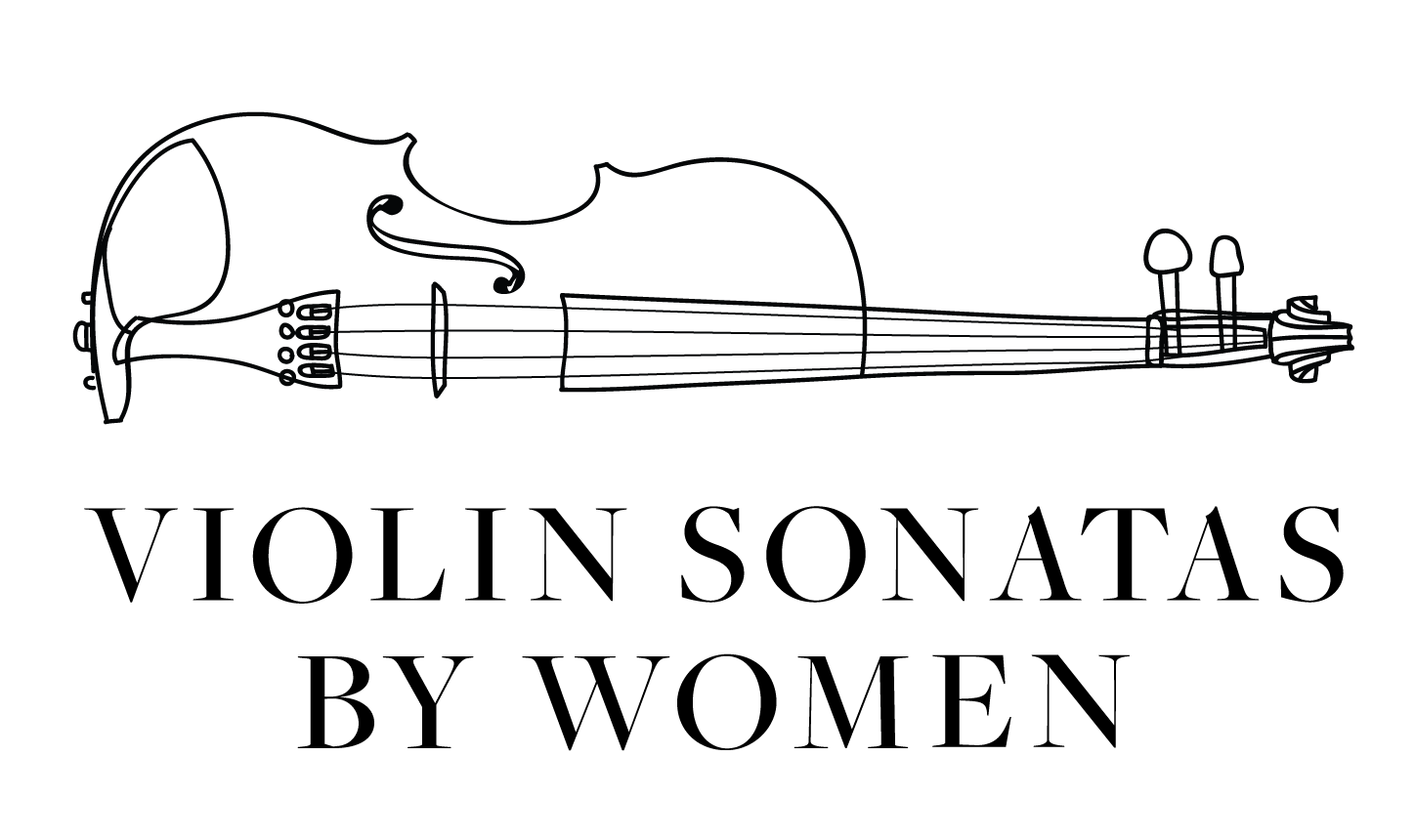Amanda Röntgen-Maier
Swedish Violinist and Composer
Born: 1853 (Landskrona, Sweden)
Died: 1894 (Amsterdam, Netherlands)
BIOGRAPHY
Amanda Maier grew up in Landskrona, Sweden, and studied violin and piano with her father. She began composition studies at age sixteen at the Royal College of Music in Stockholm.¹ In 1872, she was the first female to graduate from the school. Maier’s interest in composition grew as she continued her composition studies at the Leipzig Conservatory. Her primary composition instructor at the conservatory was Carl Reinecke. During her studies she also studied violin with Engelbert Rontgen, a former pupil of Ferdinand David.²
Maier quickly gained honor as both a performer and composer. She was the recipient of numerous composition awards, including one for her violin sonata. As her compositional fame grew, so too did her recognition as a violinist. Maier spent several years touring and performing in Europe before her marriage in 1880 to her violin teacher’s son, Julius Rontgen.³
As was typical for that time, a woman’s professional activities were limited after marriage. Maier’s performances of her works were restricted to small concerts at her home salon in Amsterdam. Maier still managed to make strong connections during this time, as her colleagues often performed at her home concerts. These colleagues included composers such as Johannes Brahms, Edvard Grieg, Clara Schumann, Ethel Smyth, and Elisabeth von Herzogenberg.⁴
Maier’s published works include her violin sonata, six short pieces for violin and piano, works for piano solo, a string quartet, and a one-movement violin concerto. Her unpublished works include works for piano, a string quartet, works for organ, solo violin pieces, and a several trios. Unfortunately, some of her compositions have been lost.⁵
Sonata for Piano and Violin (1878)
SONATA INFORMATION
The title page of Maier’s violin sonata reads, “To My Dear Father.”
Composed when she was 21 years old, Maier wrote her violin sonata while she was studying in Leipzig. It is her only known published violin sonata. Though the piece was well received and won a composition prize, it was not recorded until 1994.
This sonata exemplifies influence from both Robert Schumann and Felix Mendelssohn. Maier studied their works in great depth during her schooling in Leipzig, as these composers were highly regarded and used as models for composition students.⁶
I. Allegro (~9 min)
II. Andantino - Allegretto un poco vivace (~4 min)
III. Allegro molto vivace (~6 min)
SCORES
1. Manuscript Location: Unknown
2. First Edition: IMSLP, MusOpen, Harvard Library, Performer’s Edition, Musikaliskakonstforeningen
3. Second Edition: Swedish Musical Heritage
RECORDINGS
1. Bernt Lysell and Lucia Negro: YouTube, Spotify
2. Gregory Maytan and Nicole Lee: IMSLP, Spotify
3. Cecilia Zilliacus and Bengt Forsberg: Naxos, YouTube, Spotify
4. Elmira Darvarova and Philip Myers: Naxos, Amazon, Spotify
5. Agata Kawa-Cajler and Iveta Calite: YouTube
6. Katharina Wimmer and Ingrid Wendel: YouTube, Naxos
7. Romana Porumb and Tomas Kloosterman: YouTube
Sources
“Amanda Maier.” Amanda Maier Violin Sonata in B minor. Edition Silvertrust. https://www.editionsilvertrust.com/maier-violin-sonata.htm.
Fronczak, Magdalena. “Carolina Amanda Erika Maier-Röntgen.” Svenskt Kvinnobiografiskt Lexikon, 2021. https://www.skbl.se/en/article/AmandaMaierRontgen.
Fronczak, “Carolina Amanda Erika Maier-Röntgen.”
“Amanda Maier .” Amanda Maier Violin Sonata in B minor. Edition Silvertrust.
Fronczak, “Carolina Amanda Erika Maier-Röntgen.”
“Amanda Maier .” Amanda Maier violin sonata in B minor. Edition Silvertrust.

